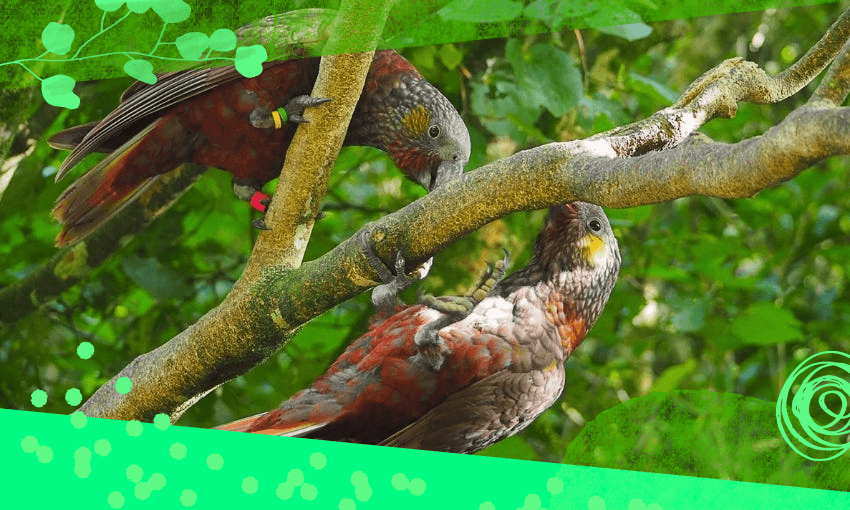The ‘moonshot’ goal of a pest-free Aotearoa is still a long way off – but some encouraging progress is being made, finds Ellen Rykers.
This is an excerpt from our weekly environmental newsletter Future Proof. Sign up here.
On Waiheke Island, residents are woken up by heightened birdsong and screeching kākā. On the Miramar Peninsula, the Wellington green gecko has been seen for the first time in years – if not generations. And in the hills behind the capital city, reintroduced kiwi are starting to breed.
It’s been almost eight years since former prime minister John Key announced the “moonshot” goal for Aotearoa to be free of rats, possums and mustelids by 2050. Now, in some places, the biodiversity is beginning to bounce back.
“We’re starting to see gains from a community, social perspective, and biodiversity, and also from an economic perspective,” says Brett Butland, landscape director at Predator Free 2050 Ltd. “People are seeing the benefits, the feedback from communities, landowners, mana whenua and councils, they’re seeing economic impact in their region.”
Predator Free 2050 Ltd is the charitable company created by the Crown to deliver on the predator free aspiration, funding 18 landscape-scale projects from the Bay of Islands to Dunedin to the Chatham Islands.
Collectively, they’ve cleared possums, rats and mustelids (stoats, ferrets and weasels) from 107,000 hectares – an area about two-thirds the size of Rakiura Stewart Island. “The biodiversity gains are huge,” says Butland. Waiheke has seen native bird counts increase by 52% compared to 20 years ago, and Miramar Peninsula has seen a 71% increase in native bird detections over five years. The projects are also providing meaningful jobs, opportunities for kaitiakitanga, and community unity.
At a recent hui, the 18 big projects and other players in the Predator Free 2050 movement gathered to discuss these wins – and the big challenges looming. “We’ve gone from the question of ‘can we do this at all?’ to now saying, we can do more than 100,000 hectares and defend that with competence,” says Butland.
But if we’re going to reach that 2050 target, from 2030 we’ll need to be churning through up to 1.5 million hectares every year, Butland explains, to achieve eradication across the entire 26 million-odd hectares. That will come with a chunky price tag, and poses gnarly technical and social challenges. (This article from The Post has a good overview of some of those difficulties.)
“There’s still a lot we don’t know,” says Butland, “and no silver bullet. But people are working together to find a solution rather than saying it’s just too hard. The tight timeline is “forcing innovation,” Butland says, with 26 new tools on the market. “If there’s a will, there’s a way, and I think we’ve started to show that there’s probably a way.”
“We’re now starting to enable the next generation of children being born who won’t know what a rat in the roof sounds like,” says Butland. Instead, they’ll hear the raucous, lovely kākā.
